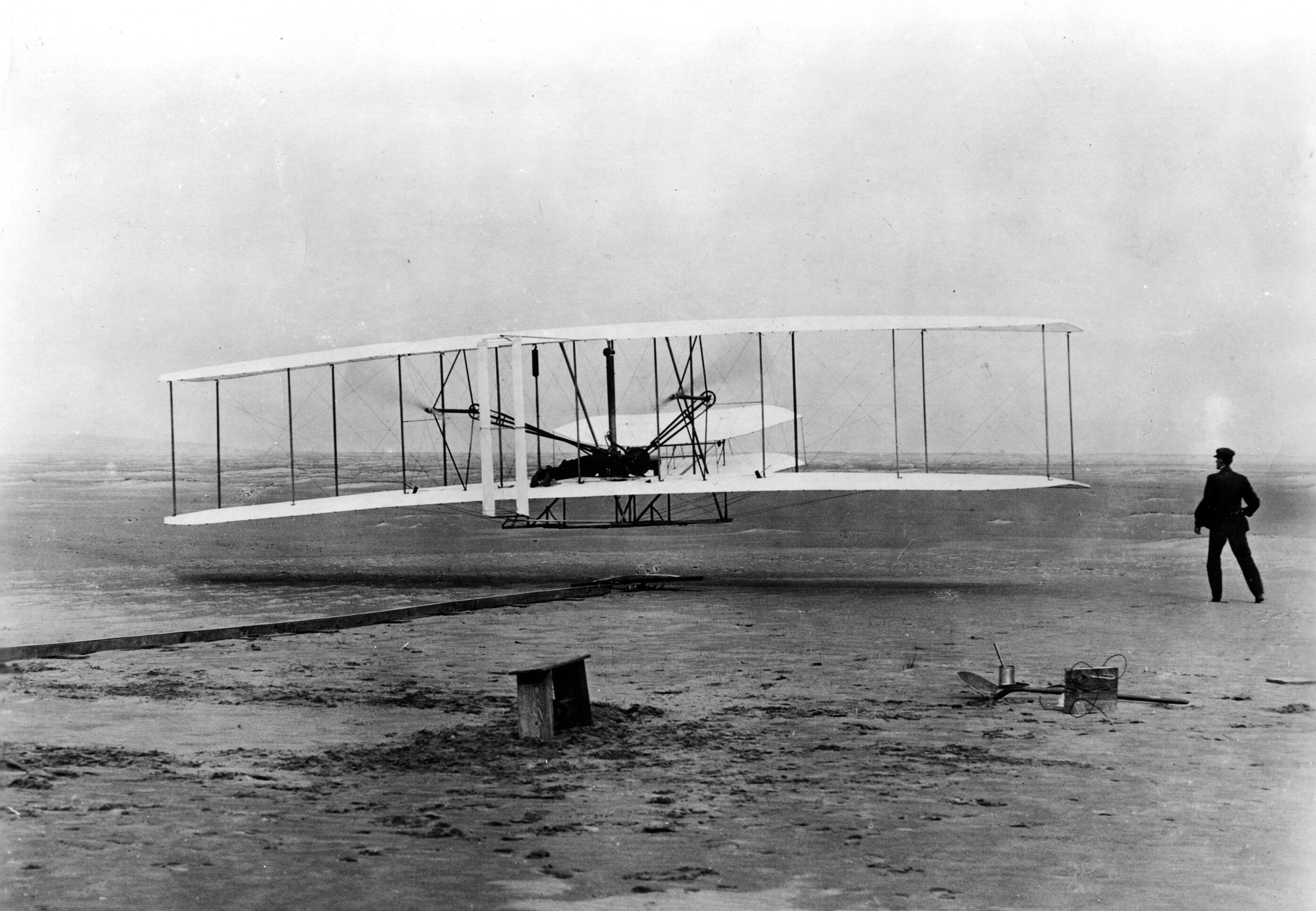The Wright Brothers and the Weather Bureau - National Weather Service Heritage

The Wright Brothers and the Weather Bureau
By NWS Heritage Projects Editorial StaffEditor's Note: The following was adapted from a story prepared by the National Weather Service Weather Forecast Office in Newport/Morehead City, NC.
On December 17, 1903, Wilbur and Orville Wright made four brief flights at Kitty Hawk, North Carolina with their first powered aircraft. From 1905 to 1907, the Wright Brothers developed their flying machine into the first practical fixed-wing aircraft. Although not the first to build and fly experimental aircraft, the Wright Brothers were the first to invent aircraft controls that made fixed-wing powered flight possible. The initial flight lasted 12 seconds and covered 120 feet. Three more flights were made that day with Wilbur Wright piloting the record flight lasting 59 seconds over a distance of 852 feet.
Previously, in 1900, The Wright Brothers had journeyed to Kitty Hawk to begin their manned gliding experiments, as the mid-Atlantic coast was known for its regular breezes and soft sandy landing surfaces. The Weather Bureau played an important role in these first flights. The first weather station in North Carolina was established by the U.S. Army Signal Service on August 16, 1874 at the Cape Hatteras Lighthouse keeper's quarters as a weather reporting station and commercial telegraph office. A second weather office was set up at the Kitty Hawk Life Saving Station in 1875, established for the purpose of facilitating the repair of the telegraph line connecting Cape Hatteras and Cape Henry. In determining the best location to test their flying machine, the Wright Brothers wrote to the office in Kitty Hawk, which seemed like a good candidate for the test flight. They received a prompt and friendly reply from Joseph J. Dosher, who staffed the office, which helped to convince the Wrights that Kitty Hawk was the best place to attempt their feat.
Today, National Aviation Meteorologists coordinate National Weather Service operations to support aircraft traffic flow across the nation, working side-by-side with the FAA at its Air Traffic Control System Command Center in Northern Virginia. NWS Center Weather Service Units are co-located in FAA Air Route Traffic Control Centers across the country, supporting controllers with special forecasts for designated airspace. In addition, the NWS Aviation Weather Center in Kansas City provides graphical forecasts for both commercial and private aviation, covering North America and into the middle of the Atlantic and Pacific Oceans. Local Weather Forecast Offices issue site-specific airport forecasts known as Terminal Aerodrome Forecasts, or TAFs, to aid weather-related decision-making by pilots and air traffic controllers.
Resources and Additional Reading:
- NWS Newport/Morehead City, NC Story "December 17, 2013 - 110th Anniversary of the Wright Brothers' First Flight" - https://www.weather.gov/mhx/FirstFlight
- The Weather Bureau's "Flying Forecasts" - https://vlab.noaa.gov/web/nws-heritage/-/aviation-forecasts-and-the-weather-bureau
- Close Calls During Weather Flights - https://vlab.noaa.gov/web/nws-heritage/-/close-calls-during-weather-flights
- The Thunderstorm Project: When Pilots Flew Into Thunderstorms ... Intentionally - https://vlab.noaa.gov/web/nws-heritage/-/the-thunderstorm-project-when-pilots-flew-into-thunderstorms-...-intentionally
- Almost Science Fiction: Hurricane Modification and Project STORMFURY - https://vlab.noaa.gov/web/nws-heritage/-/almost-science-fiction-hurricane-modification-and-project-stormfury
- The Sky is Falling: Delta Air Lines Flight 191 Crash - https://vlab.noaa.gov/web/nws-heritage/-/the-sky-is-falling-delta-air-lines-flight-191-crash
- Aviation Weather Center - https://aviationweather.gov/
